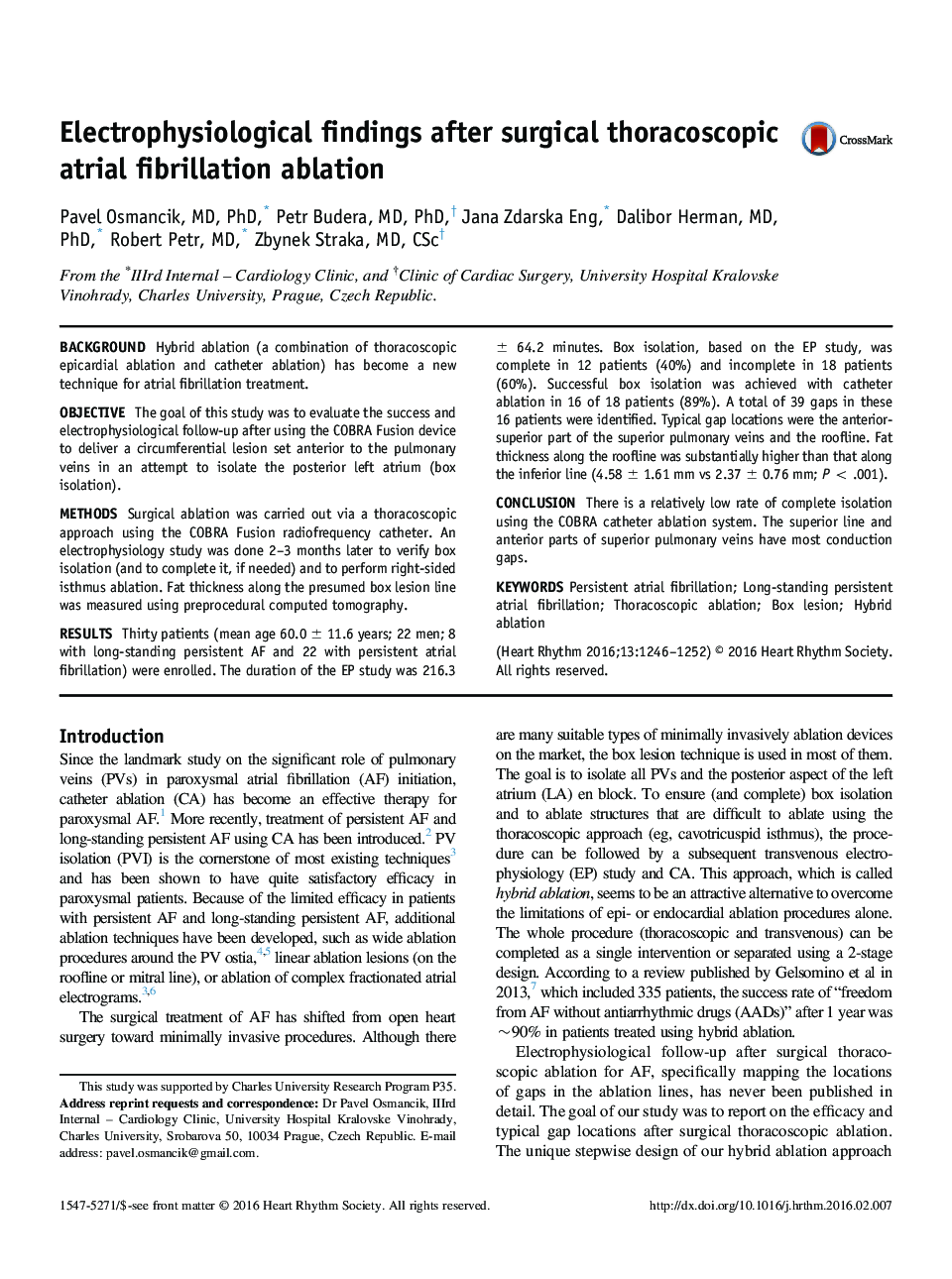| کد مقاله | کد نشریه | سال انتشار | مقاله انگلیسی | نسخه تمام متن |
|---|---|---|---|---|
| 2921708 | 1175800 | 2016 | 7 صفحه PDF | دانلود رایگان |
BackgroundHybrid ablation (a combination of thoracoscopic epicardial ablation and catheter ablation) has become a new technique for atrial fibrillation treatment.ObjectiveThe goal of this study was to evaluate the success and electrophysiological follow-up after using the COBRA Fusion device to deliver a circumferential lesion set anterior to the pulmonary veins in an attempt to isolate the posterior left atrium (box isolation).MethodsSurgical ablation was carried out via a thoracoscopic approach using the COBRA Fusion radiofrequency catheter. An electrophysiology study was done 2–3 months later to verify box isolation (and to complete it, if needed) and to perform right-sided isthmus ablation. Fat thickness along the presumed box lesion line was measured using preprocedural computed tomography.ResultsThirty patients (mean age 60.0 ± 11.6 years; 22 men; 8 with long-standing persistent AF and 22 with persistent atrial fibrillation) were enrolled. The duration of the EP study was 216.3 ± 64.2 minutes. Box isolation, based on the EP study, was complete in 12 patients (40%) and incomplete in 18 patients (60%). Successful box isolation was achieved with catheter ablation in 16 of 18 patients (89%). A total of 39 gaps in these 16 patients were identified. Typical gap locations were the anterior-superior part of the superior pulmonary veins and the roofline. Fat thickness along the roofline was substantially higher than that along the inferior line (4.58 ± 1.61 mm vs 2.37 ± 0.76 mm; P < .001).ConclusionThere is a relatively low rate of complete isolation using the COBRA catheter ablation system. The superior line and anterior parts of superior pulmonary veins have most conduction gaps.
Journal: Heart Rhythm - Volume 13, Issue 6, June 2016, Pages 1246–1252
